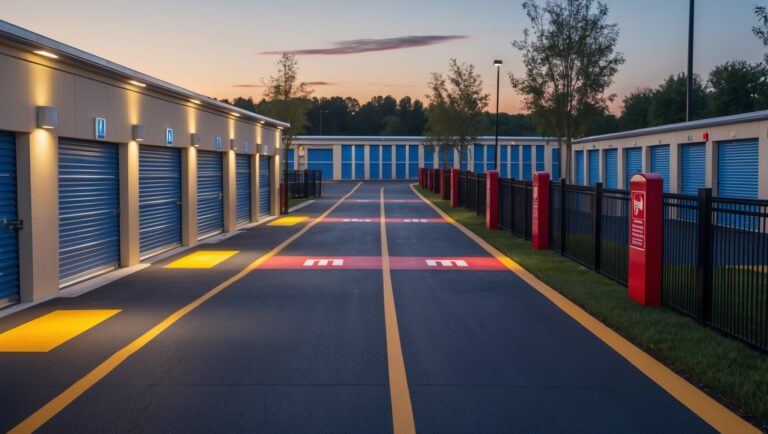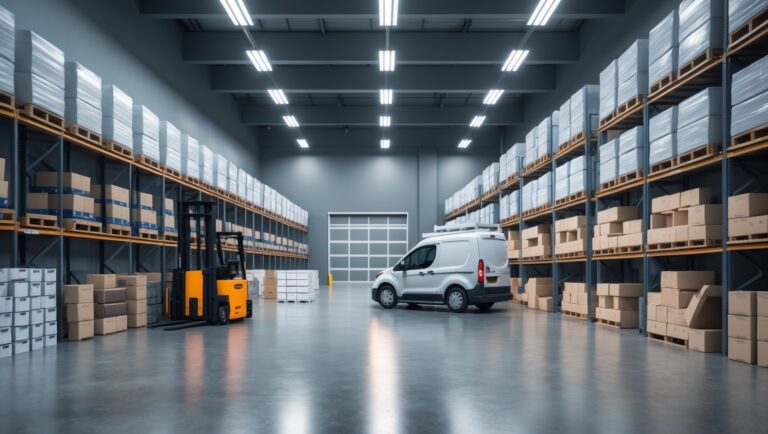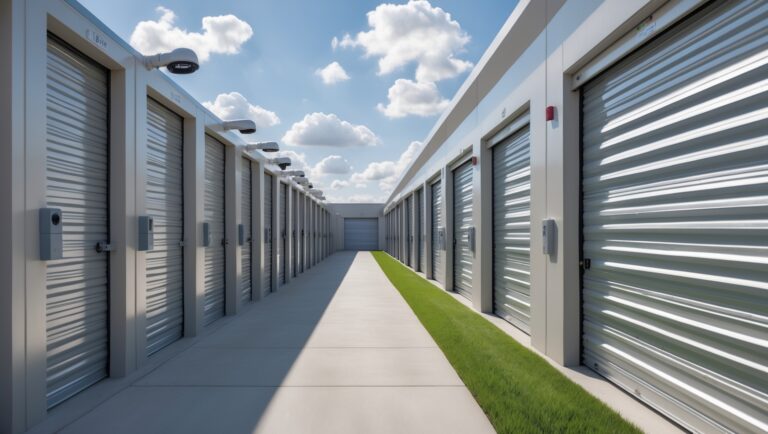Storage Facility Drainage Solutions: Preventing Water Damage and Costly Repairs
Introduction: Why Drainage Matters in Storage Facilities
When it comes to managing a successful storage facility, operators often focus on security, marketing, and customer service. However, one of the most overlooked—and potentially expensive—challenges is water management. Poor drainage can lead to water intrusion, mold growth, damaged goods, and costly structural repairs. Whether your facility is in a region prone to heavy rains, occasional storms, or even snowmelt, ignoring drainage issues is a recipe for disaster. Effective drainage systems not only protect your investment but also keep tenants’ belongings safe, reduce maintenance headaches, and boost your reputation for reliability. In this in-depth guide, we’ll explore the specific drainage challenges storage facilities face, practical solutions for new and existing properties, actionable steps to prevent water damage, and tips for ongoing maintenance to ensure your facility stays dry and disaster-free.
Understanding Drainage Challenges in Storage Facilities
Common Sources of Water Intrusion
Storage facilities are particularly vulnerable to water damage due to their layout and construction. Common sources of water intrusion include:
- Surface runoff: Rainwater or melting snow flowing across paved lots.
- Roof drainage: Inadequate or clogged gutters and downspouts causing overflow near unit entrances.
- Subsurface water: Rising groundwater or poor foundation drainage leading to seepage through floors or walls.
- Plumbing leaks: Breaks or leaks in pipes, especially in facilities with climate control or on-site bathrooms.
Risks of Inadequate Drainage
Ignoring drainage problems can lead to:
- Water-stained floors and walls
- Mold and mildew growth, creating health hazards
- Damage to tenants’ stored goods, resulting in insurance claims or lawsuits
- Structural damage to units and paved areas
- Increased maintenance and repair costs
- Negative reviews and reduced occupancy rates
Identifying Drainage Problems: Warning Signs and Site Assessment
Visual Indicators
Conduct regular inspections and look for these warning signs:
- Puddles or standing water near unit doors after rain
- Efflorescence (white, powdery residue) on concrete floors or walls
- Water stains, especially at floor level
- Soft or sunken spots in asphalt or gravel driveways
- Mold odors or visible mold growth
- Rust on metal doors, frames, or storage racks
Site Assessment Checklist
To thoroughly assess your facility’s drainage needs, consider:
- Facility topography: Does water flow toward or away from units?
- Condition of gutters/downspouts: Are they clean, secure, and properly directing water?
- Grading: Are paved areas sloped to channel water away from buildings?
- Existing drains: Are surface and subsurface drains present and functioning?
- Soil type: Is the soil clay-heavy (poor drainage) or sandy (better drainage)?
- Local climate: How much rainfall or snow does the area receive annually?
Designing Effective Drainage Systems for New Facilities
Site Grading and Sloping
Proper site grading is the foundation of all drainage solutions. The ground should slope away from buildings at a minimum of 2% (about a quarter inch per foot) for at least 10 feet. Paved driveways and walkways should also be angled to prevent water from pooling near unit doors.
Gutters, Downspouts, and Roof Runoff Management
- Oversized Gutters: Use gutters large enough to handle heavy rainfall.
- Downspout Extensions: Direct downspouts at least 6–10 feet away from the building’s foundation.
- Splash Blocks or Piping: Install splash blocks or underground piping to carry water safely to storm drains or retention ponds.
Surface and Subsurface Drainage
- French Drains: Gravel-filled trenches with perforated pipes installed along the base of buildings to intercept and redirect groundwater.
- Trench Drains: Surface-level channels with grates, ideal for driveways and loading areas where runoff collects.
- Catch Basins: Collect surface water and direct it to storm sewers or retention areas.
Stormwater Retention and Detention
Local regulations may require stormwater management. Design options include:
- Retention ponds or dry wells to temporarily hold runoff
- Permeable pavers or gravel areas to increase infiltration
- Rain gardens with water-tolerant plants for natural absorption
Upgrading Drainage in Existing Facilities
Retrofit Solutions for Older Properties
Many older storage facilities were built before modern drainage standards. Upgrading doesn’t always mean a complete overhaul. Start with these practical steps:
- Seal cracks: Use hydraulic cement or epoxy to seal floor and wall cracks where water seeps in.
- Install door thresholds: Raised or sloped thresholds help block water at unit entrances.
- Add surface drains: Trench or channel drains can be retrofitted in driveways or along building perimeters.
- Improve gutter/downspout systems: Replace undersized or damaged components and ensure long extensions.
- Re-grade problem areas: Add or remove soil and re-pave as needed to improve slope away from buildings.
Waterproofing and Protective Coatings
Applying waterproof membranes or coatings to floors and lower walls (especially in below-grade units) adds an extra layer of protection. Choose products rated for both negative-side (inside) and positive-side (outside) waterproofing for best results.
Key Drainage Components: Selection and Maintenance
Gutters and Downspouts
Choose rust-resistant materials like aluminum or coated steel. Install leaf guards to reduce clogging and ensure all joints are sealed tight. Clean and inspect twice yearly, or more often if surrounded by trees.
Trench and Channel Drains
Use heavy-duty grates rated for vehicle traffic. Regularly remove debris to prevent clogs. Inspect for settling or damage after each freeze-thaw cycle.
French Drains and Subsurface Systems
Install filter fabric to prevent sediment buildup. Check for slow draining or backups, which indicate a clog or collapsed pipe. Jet-clean pipes annually if possible.
Drainage Piping
Use smooth-walled PVC or HDPE for longevity and easy cleaning. Ensure all underground piping has adequate slope (minimum 1% grade) to keep water moving.
Preventing Water Damage: Best Practices for Storage Facility Operators
Routine Inspections
- Walk the property after every major rainstorm to check for pooling or erosion.
- Inspect inside units for new water stains, odors, or mold.
- Monitor gutter and drain performance.
Tenant Communication
- Notify tenants about best practices—store items off the floor, use pallets, and avoid storing sensitive goods on the ground.
- Provide clear instructions on how to report leaks or water issues.
Rapid Response Protocols
- Keep a water extraction kit (wet vac, fans, absorbent materials) on-site for fast cleanup.
- Establish relationships with local water mitigation contractors for emergencies.
- Document all incidents and repairs for insurance and liability purposes.
Compliance and Local Regulations
Many municipalities require stormwater management plans, especially for new builds or expansions. Work with an engineer familiar with local codes. Typical requirements include:
- Minimum setback distances from property lines
- Maximum allowable runoff rates
- Retention/detention system design and maintenance
- Periodic inspections and reporting
Failing to comply can result in fines, construction delays, or forced retrofits.
Cost Considerations and Budgeting for Drainage Improvements
Budget Breakdown for Common Solutions
- Gutter and downspout upgrades: $5–$8 per linear foot installed
- Trench/Channel drains: $30–$50 per linear foot (including excavation)
- French drains: $20–$40 per linear foot
- Re-grading and paving: $2–$5 per square foot
- Catch basins and dry wells: $500–$2,500 each depending on size and depth
These are ballpark numbers; costs vary by region and scope. Prioritize the most urgent fixes first and consider phasing larger projects.
Long-Term Savings
Investing in drainage improvements pays off by:
- Reducing insurance claims and premiums
- Lowering maintenance and repair costs over time
- Protecting facility reputation and occupancy rates
- Increasing property value and marketability
Case Study: Successful Drainage Overhaul at a 200-Unit Facility
Background: A 200-unit storage facility in the Midwest experienced recurring water issues, with tenants routinely complaining about wet floors and musty odors after rainstorms.
Assessment: Site inspection revealed poor grading, undersized gutters, and no surface drains in high-traffic loading areas.
Action Plan:
- Regraded driveways to direct water away from buildings
- Installed heavy-duty gutters and 8-foot downspout extensions
- Added trench drains at entrances to each building
- Applied waterproof coatings to interior floors and walls
Results: Within one year, water intrusion complaints dropped to zero. Maintenance costs fell by 35%, and tenant satisfaction scores improved. The facility now advertises “dry, protected storage” as a key selling point, helping to boost occupancy rates even during rainy seasons.
Ongoing Maintenance: Keeping Your Drainage Systems Effective
Seasonal Maintenance Checklist
- Spring: Clear gutters and drains of winter debris; check for frost heave in paved areas.
- Summer: Monitor for rapid plant growth near drains; inspect for erosion after thunderstorms.
- Fall: Remove leaves and organic matter from all drainage systems; prep for freezing weather.
- Winter: Ensure snowmelt is routed away from buildings; use ice melt cautiously near drains.
Record-Keeping and Inspections
Log all inspections and maintenance activities. Digital records make it easier to spot recurring issues and demonstrate compliance with local regulations. Conduct professional drainage inspections every 3–5 years, or after any major site changes.
Conclusion: Proactive Drainage is Smart Management
Water damage is one of the most significant threats to the integrity and profitability of any storage facility. Yet, with thoughtful planning, practical upgrades, and routine maintenance, you can transform drainage from a liability into a competitive advantage. Effective drainage protects your buildings, preserves tenants’ valuables, and saves you money on repairs and insurance. Start by assessing your property’s current vulnerabilities, prioritize the most urgent fixes, and create a regular maintenance schedule. Don’t wait until the next big storm exposes costly weaknesses—take action now and position your facility as the safest, driest option in your market. In a competitive industry, a reputation for reliability and dry, secure storage can be your most valuable asset. With the strategies outlined in this guide, you’re well-equipped to safeguard your facility against water-related headaches for years to come.





